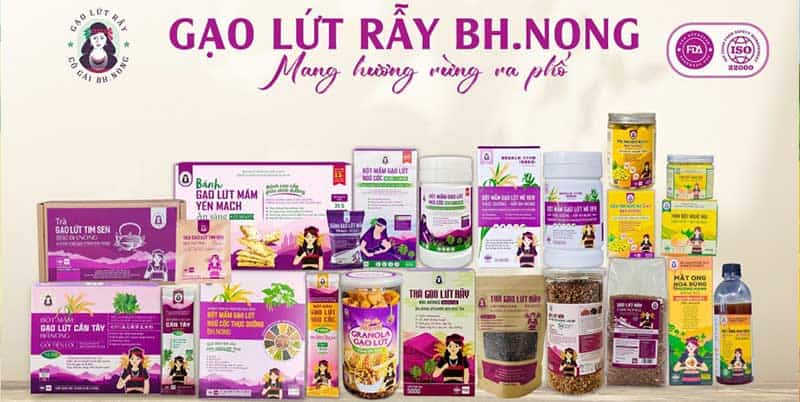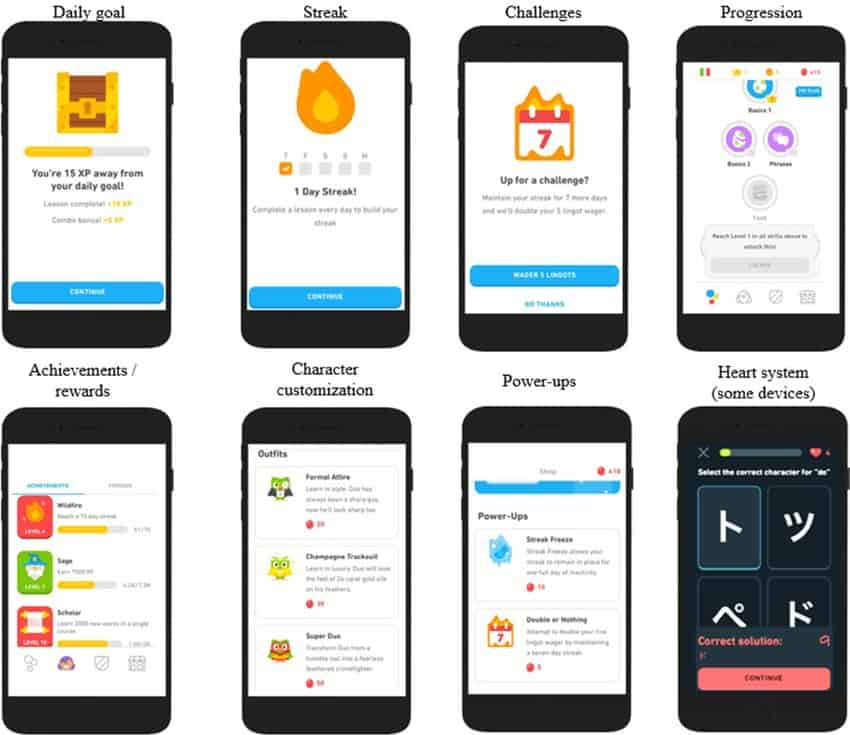You can also increase revenue by getting your customers to purchase more often. Consider how you might build recurrency into your revenue.
Refill Model
The printer vs. cartridge or razor vs. blade are examples of the refill model. Printers, once expensive, have become more affordable, and profits are now driven primarily through cartridge refills. Some companies enhance this strategy by making it extremely convenient for customers to refill their cartridges. This includes providing low-ink notifications, offering online ordering, and even implementing refill subscription services to ensure customers won’t run out of essential supplies.
If you wish to take this approach to encourage more frequent purchases, do not deliberately short-change your customer to encourage spending. For instance, requiring replacements before they are genuinely necessary can harm your brand and erode trust. Instead, focus on transparent and ethical practices where you’re prioritizing the customer experience (low-ink notifications, ease of online ordering), value (lower upfront cost to purchase a printer makes it more accessible), or convenience (subscription). Moreover, consider incorporating circular design principles to reduce waste, such as offering options to reuse or recycle old cartridges. Profit doesn’t have to come at the expense of our planet, and responsible business practices can lead to both financial success and sustainability.
Adjusting Packaging
If your product has a short shelf life, it might be worth considering reducing the quantity packaged or purchased in a single transaction. For instance,
500g of cookies for $10 ($0.02 per g)
Vs.
20g of cookies for $1 ($0.05 per g)
This not only helps reduce waste from products expiring before consumption but also lowers the purchase price (despite the higher cost per volume) and makes it easier for people to buy and try (reducing CAC). Additionally, this approach could potentially lead to a higher profit margin. However, it may not be a suitable option if it results in significantly more packaging waste and cost.
Staying Top-of-Mind
The more they remember you, the more often they will come back to buy from you (vs. a competitor). Achieving memorability is intrinsically tied to the clarity and positioning of your brand. If you aren’t already, consider how you can align your brand with a distinct lifestyle, activity, habit, or behavior. It’s advantageous if this area of focus pertains to something that happens regularly, as opposed to infrequently (e.g., travel).
While in Vietnam during my recent engagement with BizCare, I had the opportunity to work with Bh. Nong, a female-founded company that employed ethnic minorities to ethically source sustainable ingredients in the mountainous region of Quang Nam province for the production of healthy and delicious snacks.


In my consultation with them, I observed that their product line encompasses a variety of items, including rice tea, starch tablets, rice crackers, rice flour, germ powder, forest flower honey, and more. While they have a strong commitment to promoting healthy food products and ingredients, their product lineup appeared somewhat fragmented. Although diversification is valuable, it’s essential to establish distinct brands or product lines for clarity.
One possible strategic shift could involve targeting corporate offices and supplying them with healthy snacks. Their tea, forest flower honey, wild rice crackers, and nuts all fall into the category of complementary products for this purpose. Adopting such a focus would provide the brand with a clear and defined position in the market. Moreover, it would lead to more consistent revenue generation, as these snacks could be repurchased when supplies run low or even through a subscription service.
Without such strategic focus, customers might purchase various products for trial purposes, but repurchasing them would be less frequent.
To give a contrasting example, let’s look at Traveller Collective, a social venture on a mission to reduce the negative impact of tourism by promoting sustainable travel and eliminating single-use plastic in the travel industry. Given most individuals typically travel only a few times a year on average, their brand was naturally linked to an infrequent activity.
Since they couldn’t select the frequency of the activity they were associated with, they adopted a strategic product approach. Traveller Collective started with a simple keychain:
Simultaneously, they introduced a range of custom-stamped rings that customers could add to their keychain to record the countries they had visited. This not only increased their average initial order size but also facilitated the creation of a loyal customer base. These customers would add new rings whenever they visited a new country, making it an effective strategy for both profit and their social mission. By retaining customers, they could progressively build a community around their brand and further advocate for sustainable travel while sharing their initiatives and donation campaigns with their audience.
As of my last conversation with Darryl, around 2019, they were generating approximately $60,000 in monthly revenue, with 5% of their earnings donated to Plastic Change.
Encourage Behaviors that Facilitate Purchasing Your Solution
Ever wondered why the Michelin (a tire company) Awards are associated with restaurant prestige? It was a clever content marketing campaign to encourage people to drive more (ergo buy more tires). Their rating system:
- ✽: A very good restaurant in its category (Une très bonne table dans sa catégorie)
- ✽✽: Excellent cooking, worth a detour (Table excellente, mérite un détour)
- ✽✽✽: Exceptional cuisine, worth a special journey (Une des meilleures tables, vaut le voyage).
Awards are one such way to reward and encourage behaviours, the effectiveness of which depends greatly on how coveted you can make those awards.
ASSIGNMENT
Are there strategic and recurring behaviors, activities, hobbies, or habits that you can associate with your brand? If not, how can you transform transactional customers into relational customers? What ongoing value can you offer? Are there new offerings you can integrate to keep them returning for more?
Loyalty Programs
It’s easier to sell to an existing customer who is already familiar with and likes your brand than to a completely new prospect who hasn’t yet experienced the value of your solution. Don’t underestimate the importance of creating a positive customer experience and providing excellent customer service. Invest in the relationship; happy customers keep coming back for more and remain with you for much longer.
Two common loyalty initiatives are credit or points programs and stamp cards.
Credit/Points Programs
Customers accumulate credits or points (usually not cash) as they make purchases or through referrals. This typically involves creating customer accounts, which, in turn, allows you to gather valuable data on customer behavior. With customer accounts, you can track metrics like purchase frequency, average order size, churn, and preferred products, giving you a more accurate view of customer lifetime value (LTV). Instead of offering cash rewards, you provide credits customers can redeem for your offerings, or use them as discounts on future purchases. This approach is more cash flow-friendly and ensures that customers return to spend with you.
Stamp Cards
Like those you find at restaurants (buy 10 get 1 free), are another loyalty initiative, and they can also be implemented digitally. These cards can be applied to businesses beyond traditional product-based ones.
Both credit programs and stamp cards incentivize customers to make more purchases to reach the reward threshold.
Myst Asian Fusion restaurant has effectively implemented loyalty programs to enhance customer engagement. They offer a membership card that provides a 10% discount on every meal. To obtain this card, patrons need to provide their email address, enabling the restaurant to send marketing and promotional emails that help them stay top-of-mind with customers. The membership card also requires annual renewal, which comes at a nominal fee of $10. This annual renewal not only keeps customers engaged but also assists in tracking inactive customers. The fee motivates patrons to dine at the restaurant frequently, ensuring they get the full value of their investment.
In addition to the membership card, Myst Asian Fusion introduced a digital stamp card program. This program works both independently and in conjunction with the membership card, making it accessible to non-cardholders. Customers earn 1 point for every $10 spent, and these points can be exchanged for various appetizers and drinks, each requiring a different number of points for redemption.
Not directly related to our current topic on Loyalty Programs, but the well-established, family-friendly Myst also intentionally added neon signage, a massive TV wall, and expanded their drink menu. This move allowed them to capture the younger late-night crowd by presenting themselves as a hip hangout or pub-style establishment.
Also read: How many customers do you gift away?
Pivot to Solve a More Frequent Problem
By no means an easy option. But are there other problems your customers more frequently struggle with?
Let’s illustrate this concept with the story of Push Operations, a Vancouver-based company that initially offered accounting services to the restaurant and hospitality industry. They quickly realized accounting services were primarily used once a year, mainly for tax season. To maintain a consistent presence in the minds of their customers, they decided to expand their services to include payroll management, a necessity for most companies on a monthly or even bi-weekly basis.
This strategic shift significantly enhanced customer retention. Why? People tend to closely evaluate their options and consider alternatives for solutions they use infrequently. By integrating payroll services with their accounting offerings, Push Operations further minimized customer churn. Customers became less inclined to switch to another provider that didn’t offer both services seamlessly. The result? Not only did they reduce customer turnover, but they also increased their revenue since customers were now paying more frequently for the combined services.
Membership
Consider repositioning or bundling some of your offerings or activities into memberships. For instance, if you conduct paid workshops, don’t view them as standalone; offer a membership where members enjoy unlimited access to all your workshops.
Engage in customer discovery to gain insights into what your customers truly value. Are there extra benefits you can provide to your members? How can you structure your memberships with different tiers based on these varying benefits?
Subscriptions/Automate Recurring Payments
Subscriptions are appealing to customers due to their convenience. Offering a discounted price for subscriptions compared to single purchases further motivates them. This not only leads to a higher initial purchase value (if they pay for the subscription upfront) but also encourages increased usage of your offering as customers develop a habit around repeat usage. When a customer subscribes to your solution, it reduces the likelihood that they will switch to an alternative brand, ultimately improving retention and increasing customer lifetime value (LTV).
As previously mentioned, Soylent is an example of this.
Gamification/Competition
Can you incorporate gamification elements? These can include leaderboards (provide visibility on how users compare to others), checklists, progress bars/trackers, contests, achievement streaks, badges, adding friends (social accountability), and more.
Gamification should not be seen as manipulative or as a means to encourage addiction. When used appropriately, it can be a powerful tool for fostering healthy habits. For example, the meditation app Headspace encourages users to complete their first meditation session within three minutes of opening it. They celebrate this accomplishment. They also track meditation sessions and highlight users’ streaks to encourage consistency and the development of a meditation habit.

Here’s a great article on How Duolingo uses gamification to improve user retention.
ASSIGNMENT
Can you apply any of the above to create recurring revenue or increase how often your customer uses your solution? Remember, it should be about adding value, convenience, or building a better experience for your customers. Profit is the result, not the objective.
